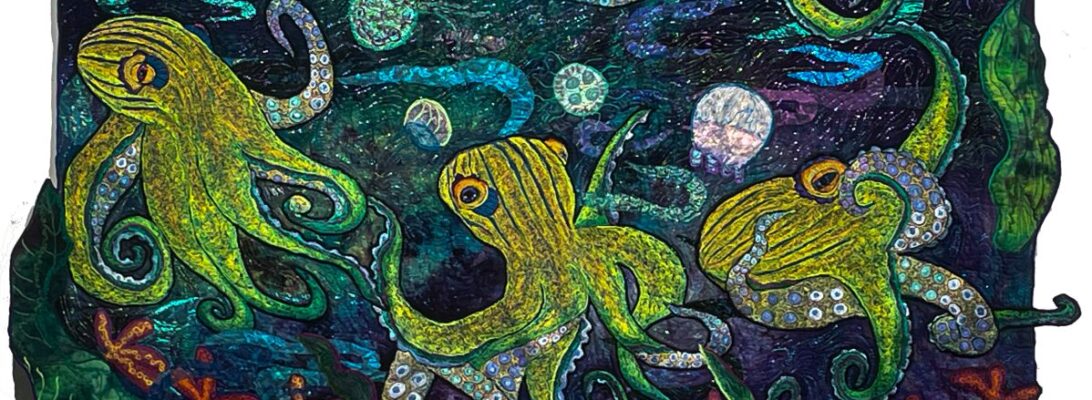
oil paint stick lace
It’s always nice to find a new use for an old tool. I’ve loved oil paint sticks for years. I use them for fabric rubbings and find them an exciting way to design.
I’d pulled some out for a friend who had come to the studio for a visit. They were still on my table, and as I went to put them away, I thought about lace and organza.

painted organza
I’ve painted lace before. Almost all the lace I’ve worked with has been polyester or nylon, so you had to paint it with acrylic paint, the kind that comes in little bottles at Joann’s and Walmart. You mix the paint with water and with fiber medium. Then you can paint it with sponge brushes. The effect is a soft spread of colors with a kind of plastic-like hand, that you can iron, and iron on things.
It’s pretty. But it’s always pastel. You know how I feel about pastels. Yes, there’s a reason for them. I still have to be talked into it.

So I thought about a white piece of lace I bought a while back at a garage sale, and painted bits of it with oil paint stick.


Tips for Working with Oil Paint Stick
- Use a sheet of freezer paper to protect your table,.
- Peel off the skin on the paint stick with a potato peeler.
- Peeling along the long side of the paint stick gives a wider brush stroke.
They can be rubbed against a surface and blended with each other.
The differences are stunning. Both are cool, but in very different ways.
Oil Paint Stick
- Has incredible bright color
- Won’t spill
- Uses up quite a bit of paint for one piece
- Takes time to dry
- Doesn’t need brushes
- Cleans up with Goop or Go Jo
- Only paints on one sided
- Sets with a hot iron
Acrylic Painted Lace
- Paints up with sponge brushes
- Drip dries within a couple hours.
- Sets with a hot iron.
- Pastel to moderate color
Will I use them both. Of course! I love using sheers, and colored sheers give me a way to shift the color of my quilt surface. Having a bright option instead of just a pastel one is a big present under the tree.
I’m working on an ibis that needs a small pond from above and some clouds. New shaded grey/blue/beige laces might be what that needs. I love new toys!




























































